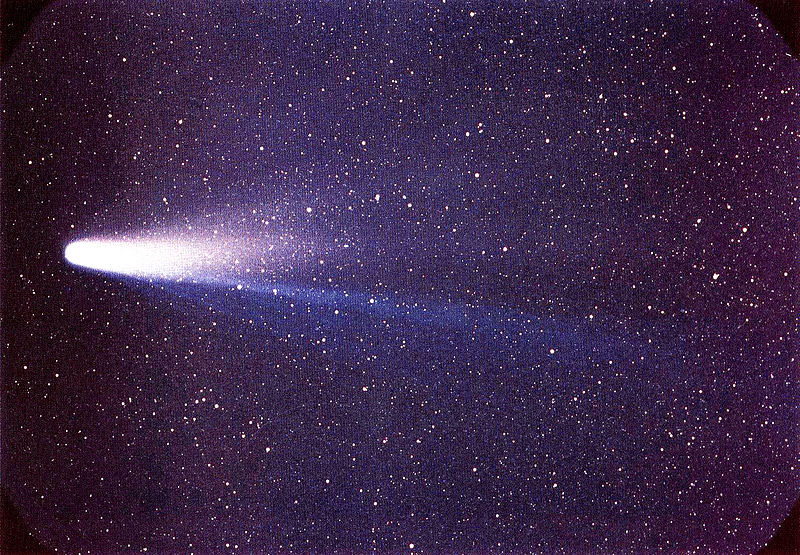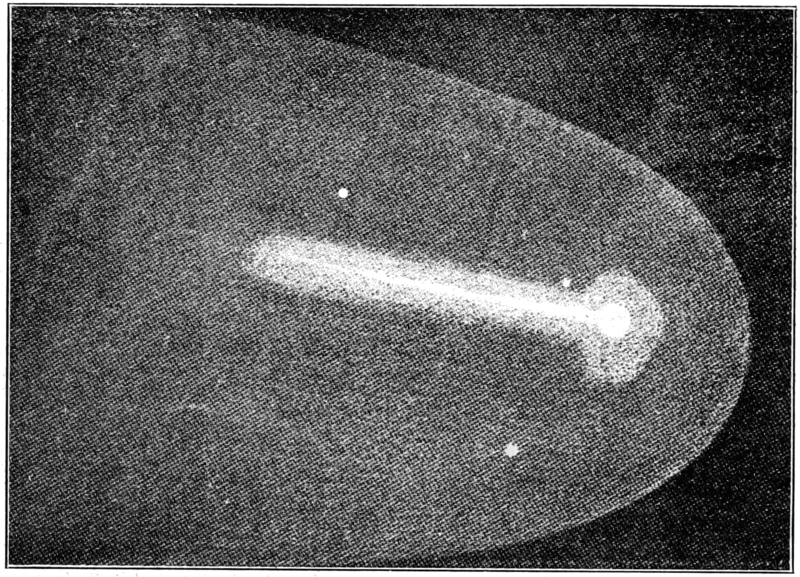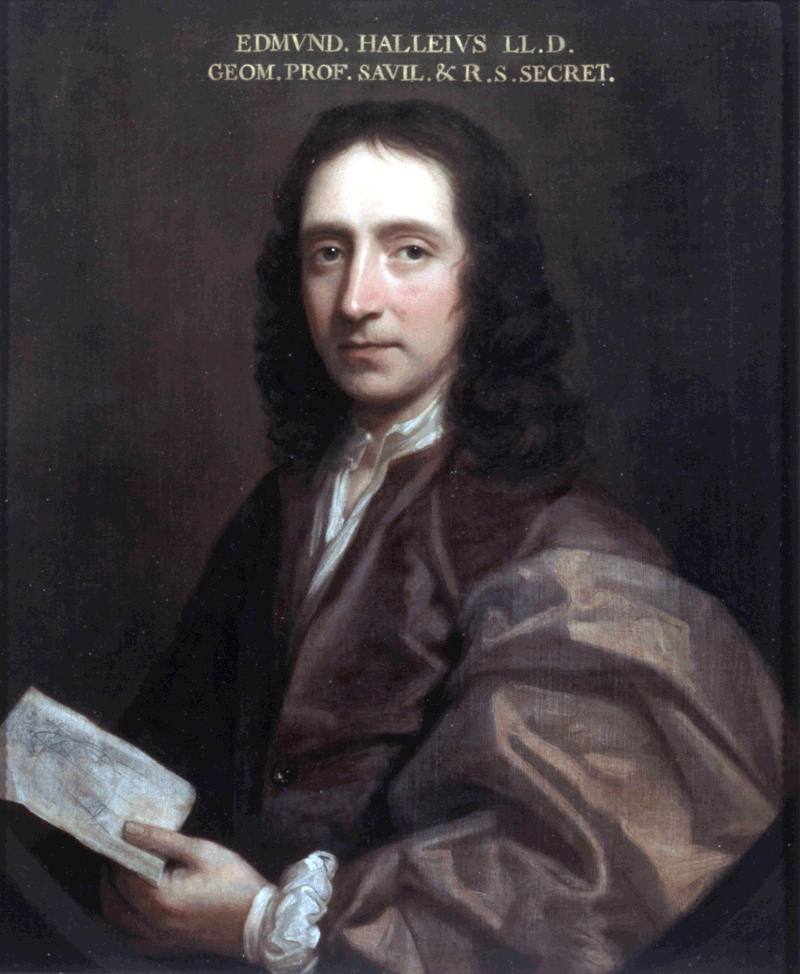Our solar system is full of amazing comets that have different objective properties. Many of these comets are periodic which means that they come around every once in a while close to the orbital path of Earth and the sun. At this point, they can be easily spotted as well. One such comet is Halley’s Comet which is considered to be among the top 5 most important comets in our solar system of all times! As a matter of fact, this comet is going to come around again in 2061.
Overview of the Halley’s Comet
The Halley’s Comet is a comet that appears from the Earth after every 75 to 76 years. It is among the few periodic comets that come around after a very short time and are easily visible to the naked eye from our planet. The first known perihelion of this comet was in 1758, as predicted by Edmond Hally.
The last known appearance of Comet Halley was in 1986 and is expected to appear next by mid of 2061. The official name of Comet Halley is 1P/Halley. Although the comet’s recorded observations are there from 240 BC, it was only up until 1705 that the returns were concluded to be of the same comet. This discovery was made by Edmond Halley, an English astronomer. For this reason, the comet is named after him.
Chemical Characteristics of Comet Halley
Despite the first appearance in 1705, the characteristics of this comet could not be understood until spacecraft were sent to its path. This was possible in 1986 when the comet was at the perihelion and close to the Earth as well. Giotto and Vega space missions were held to evaluate the characteristics of Comet Halley from an up-close point. From the evaluation, it was found that Comet Halley has been made of volatile compounds such as water, carbon, oxygen, and ice as well. Gas molecules are also among the composition of Comet Halley. A major mass of Comet Halley is made up of dust particles as well.
As Comet Halley approaches close to the perihelion, evaporation takes place and much of the mass of this comet releases dust particles. Due to solar ultraviolet radiations and chemical changes in Comet Halley on a constant basis, the comet has a huge tail as it reaches close to the perihelion.
Shape and Description of Comet Halley
Comet Halley appears huge from the outside because of dust particles and other chemicals covering it, the nucleus of this comet is quite small. This comet has dimensions of 15km x 8km x 8km. However, there can be slight variations in these dimensions as researchers continue to examine the comet. Besides, it loses some of its mass from evaporation as it reaches the perihelion. According to previous studies conducted on this comet, the shape resembles a peanut and has a low mass of 2.2 x 1014 kg.
Astronomers have also concluded the fact that this comet has been made of several small pieces as compared to a single big chunk. This is evident from the density of 0.6 grams per cubic centimeter. Images from various spacecraft and jets have shown a varied topography of this comet. It has several mountains, hills, ridges, and depressions. There are also chances that this comet has a unique form of water on it. However, conclusive evidence is yet to be provided on this claim.
According to Fred Whippie, the Halley’s Comet is a “dirty snowball” which means it has dirty ice all over it. Whippie suggested that icy objects are warmed up by the sun as they get closer to it which is why the volatile material explodes and creates a coma. Spacecraft Giotto confirmed this hypothesis with some minor changes in the description provided by Fred Whippie. The phenomenon of “dirty ice” is that it ranges from -103 degrees to -53 degrees. Vega 1 spacecraft suggested that the temperature of Comet Halley was in this range. All of these aspects proved Fred Whippie’s theory to be true.
The Orbit of Comet Halley
Historical sources have suggested that the first known appearance of Comet Halley was in 240 BC. Since then, it has had an orbital period of 74 to 79 years with an average of 76 years mostly. The orbital path is highly elliptical with an orbital eccentricity of 0.967. The farthest distance of this comet from the sun is 5.2 billion km or 35 Astronomical Units. This is also equivalent to the distance of Pluto. All these numerics show that the orbit of Comet Halley is quite huge yet it returns every 75 to 76 years due to a high speed.
Another interesting fact about the orbit of Comet Halley is that it is inclined by 18 degrees to the ecliptic. Due to the retrograde orbit, the comet ranks among celestial objects with the highest velocities in our solar system. According to the record of 1910, the relative speed of Comet Halley is 70.56 km/s which is equivalent to 254,016 km/h or 158,000 miles/hour. Due to the orbital period lasting less than 200 years, the comet Halley is known as a short-period comet.
Research has shown that Halley has been in its current orbit for the last 16,000 to 200,000 years. The exact timeframe is difficult to predict since there is limited data on this comet. Apart from that, non-gravitational effects such as the expelling of sublimating gas from the surface slightly disorient the orbital path of Comet Halley. This usually happens when the comet is close to the sun and there are chemical reactions ongoing. Due to these non-gravitational effects, the perihelion can change by four days on average.
The rotational orbit of Comet Halley is controversial in many ways. Ground observations from large telescopes suggest that a full rotation occurs in 7.4 days or 7 days and almost 10 hours. However, the last mission to Comet Halley suggested that the rotation period is only 52 hours. This is equivalent to 2 days and 4 hours. Such a major difference between the comet’s known rotation period indicates that there are various other complexities in this comet.
Timeline of Halley’s Comet
Pre 1066 Era – Comet Halley’s records have been there from 467 BC but it was unclear whether it was Comet Halley or not. However, a more certain observance was recorded in 250 BC in the Chinese record named Records of the Grand Historian. Many other observers in Greece, Rome, and other parts of the world also recorded the appearance of a comet emerging from the East and moving North.
1066 – In 1066, Comet Halley was widely seen in England but was considered an omen because of the cultural and religious practices going back then. Some records suggest that by that time, Comet Halley was four times the size of planet Venus. Comet Halley was also observed in New Mexico in this era.
1100 – 1400 – For this long period, Comet Halley was not widely observed. However, Monk Eadwine recorded the appearance of this comet in 1145. Artist Giotto di Bondone observed the comet in 1301 and represented the “Star of Bethlehem” as a fire-colored comet.
1400 – 1500 – During this time, the Ottoman Empire invaded the Kingdom of Hungary. In the year 1470, the humanist scholar Bartolomeo Platina saw the Comet Halley and wrote that it was a “hairy and fiery star that made an appearance for several days”. Halley’s appearance was also noticed in the Asian region of Kashmir during the 1456 appearance.
1531 – 1579 – Various studies were undergoing this time to learn more about Halley’s Comet.
1600 – 1700 – By this time, Edmond Halley was researching the comet and the periodic arrivals every 75 to 79 years. The three apparitions from 1531 to 1682 were keenly studied by Edmond Halley who presented his findings in 1696. However, due to a slight delay in these appearances, it became a bit confusing. Newton suggested that this is because of the gravity of other comets but Halley concluded that this is because of the gravity of Jupiter and Saturn.
1800 – 2000 – Wide research and study was done on Comet Halley during this time. Ireland-based Astronomer named E. J. Cooper saw the Comet Halley on his telescope. In 1910, many were aware that the comet would appear which is why it got popular. On 10th April, it could be seen via the naked eye as well and became the closest on 19th May. The next appearance was in 1986 in which, many spacecraft and Earth-based equipment were studying Comet Halley to extrapolate further data.
About the Discoverer – Edmond Halley
Edmond Halley has been the famous astronomer behind the discovery of the comet Halley. He belonged from Great Britain and worked as an astronomer, geophysicist, meteorologist, and physicist as well. He was also regarded as the Astronomer Royal in Britain for his countless efforts in astronomy as well as the discovery of Comet Halley as a periodic comet. Halley was a keen observer of the publications of Isaac Newton and used his work to evaluate the periodic element of Comet Halley in 1705.
Edmond Halley was not able to see the Halley Comet in his life. From the past studies and records, he suggested that this comet was periodic and predicted that it would return back in 1758. While Comet Halley did return in 1758, Edmond Halley died before that in the year 1741. Besides the discovery of Comet Halley, Edmond Halley is also credited for observations he made on terrestrial magnetism. This was done in 1698. By 1718, Hally was also able to discover the proper motion of stars that were fixed.
Conclusion
Halley’s Comet has been one of the most interesting phenomena in our solar system. It is a widely known and highly important comet in our solar system mainly because of its periodic arrivals as well as the close distance to the Earth. Comet Halley is most likely returning in the middle of 2061. We hope that you see it!




